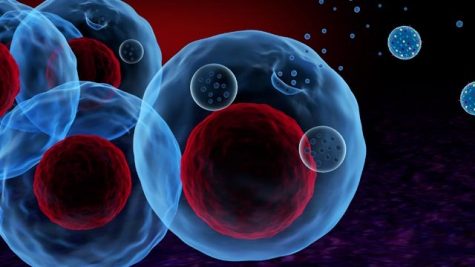Science Monthly: December Highlights
January 23, 2020
Biology/Earth Sciences
A new study shows that Chimpanzees are more likely to share tools when presented with a complex task.
Led by Washington University in St. Louis, a team of researchers from Franklin and Marshall College and University of Miami found that more experienced Chimpanzees teach other community members how to fish for termites. This highlights the species’ altruistic tendencies, a trait that is believed to play a major role in human evolution. “Non-human primates” are thought to learn by imitation and with little assistance from their mothers. However, this research indicates that “during tasks that are more difficult, mothers can play a more active role, including behaviors that function to teach.” In a population where researchers taught the Chimpanzees a complex termite fishing method, the rate at which tools are shared between community members is three times higher than that of a population without such methods.
Citations
Ogliore, Talia. Chimpanzees are more likely to share tools, teach skills, when task is more complex. December 23, 2019. https://source.wustl.edu/2019/12/chimpanzees-more-likely-to-share-tools-teach-skills-when-task-is-complex/
Physics/Astronomy
Google claimed that it had achieved quantum supremacy.
Google announced at the end of Oct. 2019 that its quantum computer Sycamore performed a task that is impossible for even the world’s fastest supercomputer—a milestone known as quantum supremacy. While a traditional computer can only process ones and zeros, a quantum computer has the capability to also process the superposition between the two states, being both one and zero at the same time—similar to how Schrödinger’s cat is both dead and alive. The quantum computer took 200 seconds on a calculation involving random numbers which Google claimed would have taken “a state-of-the-art classical supercomputer” 10,000 years.
However, IBM, one of Google’s top competitors in quantum computing, argued that this was not anything extraordinary. In response, IBM published an article saying that Google failed to take into account the abundant “disk storage” in supercomputers, which they claimed would shorten the task duration to only 2.5 days. Nonetheless, this accomplishment reassured the scientific community that quantum computers could be practical for research in the future.
Citations
- Arute et al. Quantum supremacy using a programmable superconducting processor. Nature. Vol. 574, October 24, 2019, p. 505. doi: 10.1038/s41586-019-1666-5. https://www.nature.com/articles/s41586-019-1666-5
- Pednault et al. Leveraging secondary storage to simulate deep 54-qubit Sycamore circuits. arXiv:1910.09534. Posted October 21, 2019. https://arxiv.org/abs/1910.09534

Chemistry/Medicine
Cutting-edge gene therapy technology could “reverse disease processes.”
Researchers at Ohio State University recently announced that they have found a new technique to efficiently and accurately deliver therapeutic material using cellular fluid sacs called exosomes. This method uses donated human cells, such as adult stem cells, to produce millions of exosomes that can be used as nanocarriers in gene therapy. As the exosomes can be manufactured in a lab to target specific cells or location, they are particularly useful for the treatment of tumors. According to the study, exosomes are released into the bloodstream and find their way to the tumor or infection site, even if “it is in the brain.” Not many drugs can travel to the brain, so this method gives prospect to a cure for neurological diseases such as Parkinson’s and Alzheimer’s.
Citations
Caldwell, Emily. A new gene therapy strategy, courtesy of Mother Nature. December 16, 2019. https://news.osu.edu/a-new-gene-therapy-strategy-courtesy-of-mother-nature/